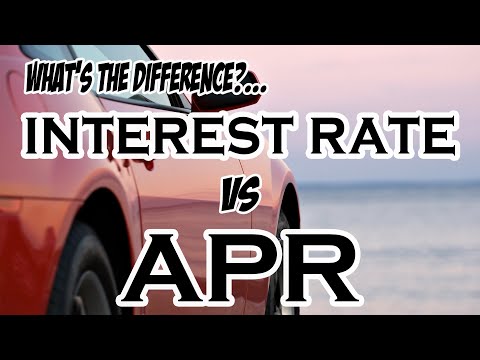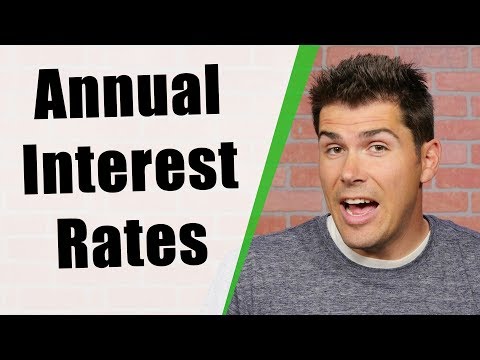In the whirlwind world of mortgages, the term “APR rates” often crops up, leaving many scratching their heads. What exactly are they, and more importantly, how can understanding them save you a pretty penny on your home loan?

Unpacking APR Rates: The Foundation of Your Mortgage Costs
Let’s cut through the jargon: APR stands for Annual Percentage Rate, and it’s the grand total of what your loan is gonna cost you each year, fees included. Unlike the eye of a novice, a trained gaze can discern the nitty-gritty that makes up APR rates: from interest rates to broker fees, and those pesky closing costs.
Why bother with the nitty-gritty? Because, my friend, that’s how you smartly compare mortgage offers. No one wants to choose a loan that seems cheaper at first glance but ends up costing more in the long haul.

APR Rates versus Interest Rates: What’s the Difference?
Interest rates might be the mortgage world’s headliners, but APR rates are the full story. While interest rates show you the bare bones—the cost of borrowing the principal—APR rates throw in those extra costs like origination fees and points. Imagine two loans flaunting identical interest rates, but one with a higher APR. That’s a signal that this loan has higher fees tucked away, a fact that could hike up your total cost over time.
Take for example the difference between a simple interest rate and an APR when looking up What Is The 30 year mortgage rate. The distinction could mean a world of difference for your wallet.

| Loan Type | Good APR Range | Notes / Factors Influencing APR |
|---|---|---|
| Mortgages | <5% (Depends on market conditions) | APR influenced by market trends, borrower’s credit score, down payment size, loan term, and other fees like closing costs. Even though a 5% APR might not be considered good historically, market fluctuations can affect what is currently competitive. |
| Personal Loans | Around 5% or less | A good APR for personal loans is influenced by credit history, income, and the lender’s policies. A 5% APR is considered good when compared to average rates which can be higher. |
| Credit Cards | At or below national average (~20%) | A good credit card APR is one that is at or below the national average. Financial institutions, especially credit unions and small local banks, may offer rates below 10%. Rates are influenced by credit score, type of card (e.g., rewards, secured, student), and issuer policies. |
| Auto Loans | 3% – 5% | This range is considered good, but the APR can vary based on the loan term, whether the car is new or used, the borrower’s credit history, and the lender. |
| Student Loans | Varies (Federal rates set by government, private rates market-driven) | Federal student loan APRs are set by the government and may change yearly. Private student loans’ APRs depend on the borrower’s creditworthiness and the lender’s terms. |
Dissecting APR Rates: A Strategic Move for Potential Homebuyers
Savvy shoppers know APR rates can be the deciding factor between an okay deal and the steal of a lifetime. It’s this rate that can determine the total green you’ll fork over through the life of your loan. And remember, a mortgage isn’t a sprint; it’s a marathon. Balancing your immediate financial situation with your long-term goals is key to selecting the right APR.

The Inside Scoop: Expert Tips on Navigating APR Rates in 2024
What’s cookin’ in the mortgage market pot of 2024? Well, insiders predict a continued dance of fluctuation in APR rates. Reading this market’s tea leaves means staying on top of trends, like monitoring bank interest rates today. And when it comes to latching onto a good APR, timing is everything. Lock it in if it aligns with your financial forecast.

Comparative Analysis: Top Lenders of 2024 and Their APR Rates
Not all lenders are created equal, and their APR rates prove it. Whether you’re eyeing a giant like Wells Fargo or considering a digital player like Quicken Loans, you’ve got to weigh factors such as loan type and your own credit score. The loan landscape is ever-shifting, so keeping tabs on these players is crucial.
For example, you could be breezing through updated APR rates from powerhouses, intrigued by how they stack up against one another. It’s here where you might discover that quirks in your creditworthiness or the nuances of loan amounts can influence the APR.
Case Studies: Real-Life Scenarios Where APR Rates Made a Difference
Let’s talk real-world impact: Michael chose a loan with a deceptively low interest rate but a high APR, resulting in a heftier bill over time. Conversely, Susan opted for a loan with a slightly higher interest rate but a lower APR, saving her bundles down the line.
A Deeper Dive: The Math Behind APR Rates and Your Savings
Grab a calculator, or if you fancy taking advantage of tech, hit up an online resource like NerdWallet. Calculating your APR can reveal the true cost of your loan’s monthly payments and the overall tab for the borrowing bonanza.
Leveraging APR Rates to Your Advantage During Mortgage Renewal
Come mortgage renewal time, knowing your APR can give you leverage to negotiate better terms. It’s your financial health check-up—skip it at your own peril.
The Future is Now: Technological Advancements in APR Rate Analysis
Tech’s changing the game, folks! New apps and platforms are zooming in to help borrowers sift through APR rates with a finesse that was once the domain of financial whizzes.
Unique Perspectives: How APR Rates Will Influence The Housing Market
As the tides of APR rates ebb and flow, they’ll undoubtedly influence how homes are bought and sold. These changes may redefine mortgage strategies, urging both buyers and sellers to stay alert.
Takeaways: Smart Planning With APR Rates in Mind
Understanding APR rates isn’t just brainy; it’s money-saving smarts in action. It’s a vital piece of your financial puzzle, one that requires you to keep a watchful eye out.
So, my fellow homebuyers, there you have it—your guide to APR rates. They might just be the guardian angels of your mortgage, shepherding you through the stormy seas of home financing. Look ’em in the eye, shake their hand and let them lead you to the promised land of canny home ownership.
Unraveling the Mystery of APR Rates
A Twist on Savings
Well, strap in, folks, because understanding apr rates can be as twisty as trying to pin down the ever-elusive spider man across The spider verse release date, but it’s worth the web-slinging! Here’s a quirky fact: APR rates often remind folks of that suspenseful wait for a movie release date. Just when you think you’ve grasped one rate, poof, it changes—kind of like trying to squeeze in an impromptu blackhead removal session on a hectic day. You go in thinking it’s a straightforward process, then suddenly, bam, you realize it’s a bit more complex than you bargained for. Still, getting to grips with APR can save you a stack of cash over time—just as investing in a good skincare routine can save your complexion.
Saving Pennies, Making Sense
Now, knowing the What Is current mortgage interest rate isn’t just idle chit-chat for financial gurus—it’s essential info for anyone looking to snag a good deal, much like finding the best shark blow dryer is for the hair-conscious. Staying in the loop can be as impactful on your mortgage payments as choosing the right blow dryer is for your locks—both can blow you away with their benefits! And, for the word enthusiasts out there, getting the Dieing or dying conundrum right might not save you money, but it sure can save you from a grammar faux pas, which, let’s face it, can be priceless. Like grammar, APRs can seem simple at first glance but dig a little deeper, and you’ll discover a world where every detail counts. So, whether you’re browsing through the Whats The 30-year mortgage rate or wondering if you’ve been tied down by a higher APR than necessary, knowledge is power—and in this case, it can power up your savings too!

What is the APR rate today?
**What is the APR rate today?**
The Annual Percentage Rate (APR) can vary day by day and between different types of loans and credit lines. To find the exact APR rate today, you would need to check the current offerings from various lenders for the specific type of borrowing you’re interested in.
Is 24% APR good or bad?
**Is 24% APR good or bad?**
A 24% APR is considered high for most types of borrowing. It’s notably above the national average for credit cards, which itself is already high, sitting above 20 percent as of March 13, 2024.
Is 5% a good APR?
**Is 5% a good APR?**
Yes, a 5% APR is considered good for personal loans, credit cards, student loans, and auto loans, as it’s much cheaper than the average rate for these types of borrowing.
Is 10% a good APR?
**Is 10% a good APR?**
A 10% APR can be considered good for credit cards, as it is lower than the average credit card APR that is currently above 20 percent. However, for other loans like mortgages, lower rates are often available, especially for borrowers with good credit.
Why are APR rates so high right now?
**Why are APR rates so high right now?**
APR rates can be high due to various economic factors such as inflation, the Federal Reserve’s interest rate policies, and market conditions. Lenders also consider the risk of default when determining APRs, so if economic conditions suggest increased risk, APRs might rise.
Is 3% a good APR?
**Is 3% a good APR?**
Yes, a 3% APR is generally considered a very good rate for most loans, including mortgages.
Is 29.99 APR high for a credit card?
**Is 29.99 APR high for a credit card?**
Yes, 29.99% APR is high for a credit card. It’s significantly above the average credit card APR, which is above 20 percent.
Why is my APR so high with good credit?
**Why is my APR so high with good credit?**
Even with good credit, your APR can be high due to other factors, such as the lender’s policies, the type of credit product, and the state of the economy. Some credit card companies also have high APRs regardless of credit history, particularly for rewards cards or cards with certain benefits.
Is 0% APR good?
**Is 0% APR good?**
Yes, 0% APR is excellent as it means you’re not being charged interest during the promotional period. However, it’s important to understand the terms, as interest may accrue if the balance isn’t paid in full by the end of the promotional period.
Is 2.9 APR bad?
**Is 2.9 APR bad?**
No, 2.9% APR is considered good and below average for most types of loans.
Is 3.5% APR good?
**Is 3.5% APR good?**
Yes, 3.5% APR is a good rate, especially for a mortgage.
Is 8% APR bad?
**Is 8% APR bad?**
For credit cards, an 8% APR is quite good, well below the average APR. For other loans, you might find lower rates, especially with a strong credit history.
Is 20 APR too high?
**Is 20 APR too high?**
Yes, 20% APR is considered high and can significantly increase the cost of borrowing, particularly for long-term balances on credit cards.
Is 9% APR too high?
**Is 9% APR too high?**
While certainly lower than the national average for credit cards, a 9% APR might still be high for other types of loans where lower rates are more common.
Do I have to worry about APR if I pay on time?
**Do I have to worry about APR if I pay on time?**
If you pay your credit card balance in full every month by the due date, you typically will not be charged interest. However, APR still matters for unexpected circumstances where you may carry a balance.
Is 24.99 a high APR?
**Is 24.99 a high APR?**
Yes, 24.99% APR is high for any form of borrowing and would increase the cost of borrowing significantly.
Is 3.5% a good APR?
**Is 3.5% a good APR?**
Yes, 3.5% is a good APR; it’s particularly favorable for mortgages and auto loans.
Is 2.9 APR good?
**Is 2.9 APR good?**
Yes, 2.9% APR is good and lower than the average for most loan types.
Is 29.9% APR bad?
**Is 29.9% APR bad?**
Yes, 29.9% APR is very high and not considered favorable for the borrower, as it can lead to large amounts of interest accruing quickly.



